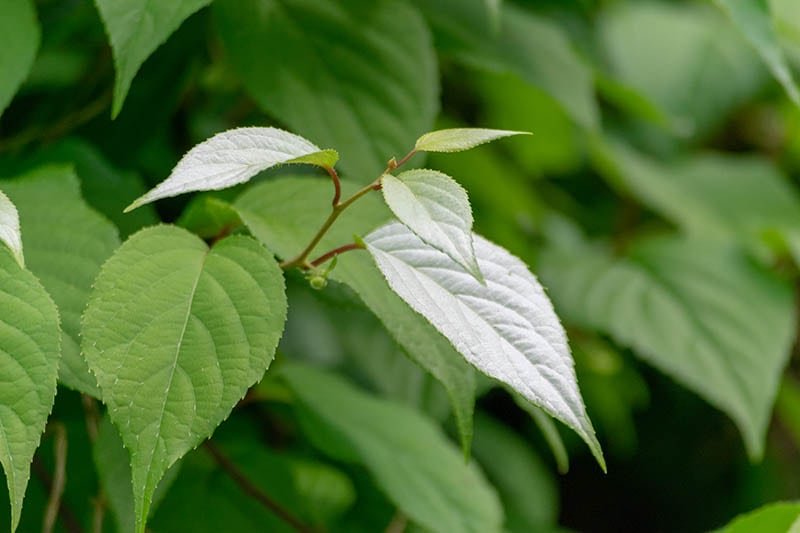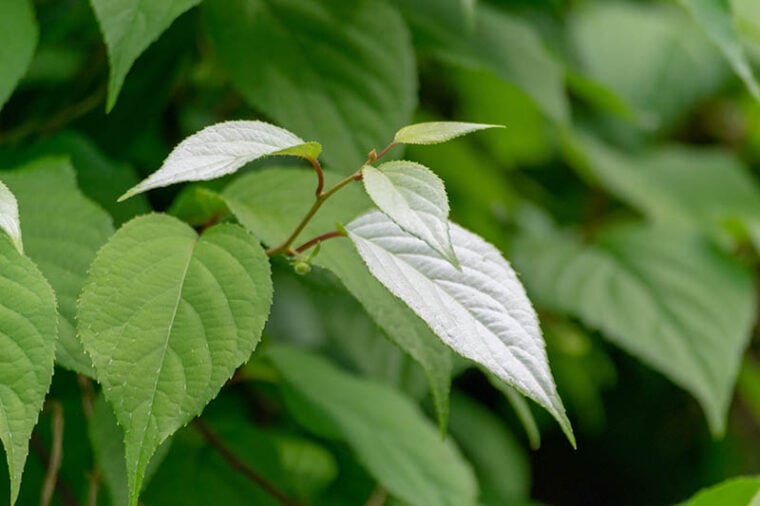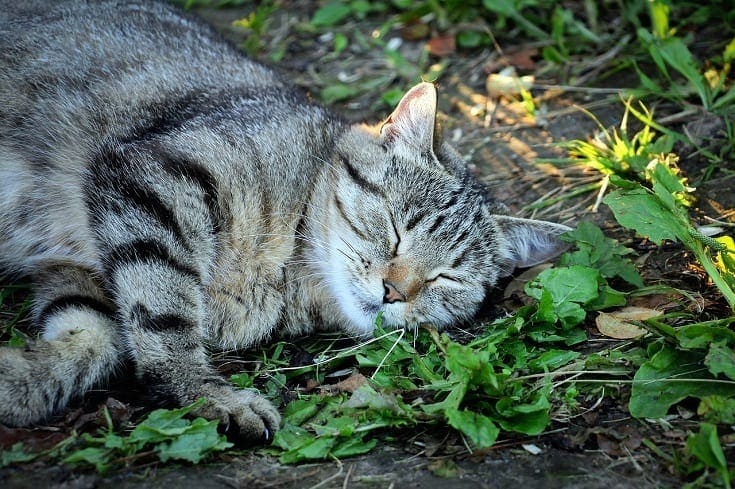
[ad_1]

Silver vine (Actinidia polygama) and catnip (Nepeta cataria) have similar effects on cats, but silver vine is thought to work for more cats than catnip. It gives cats a boost of energy when they sniff silver vine, but when they eat it, it often causes them to relax and rest. The biggest difference between silver vine and catnip isn’t how cats respond but rather how likely cats are to respond to each plant.
About 80% of cats respond to and enjoy silver vine, but research suggests that catnip only works for about 68%. Close to 75% of cats who don’t respond to catnip will respond to silver vine. Some studies argue that catnip works for just as many cats as silver vine does, but that some cats show a positive response in a more passive way e.g. less vocalization and more time in a sphynx-like posture, rather than the active response that many studies have measured.1 Silver vine is available in several forms, including powders, sprays, and sticks. Speak with your veterinarian before adding silver vine to your buddy’s entertainment rotation to ensure it’s a safe and appropriate choice for your cat.

What Is Silver Vine?
Silver vine is a plant that grows naturally in parts of China, Russia, and Japan. It’s part of the same family as kiwis. When licked or sniffed, it sends most cats into a state of absolute bliss. It has a very similar effect to catnip. When in bloom, the plant produces white flowers and orange fruit packed with vitamin C.
Catnip, or Nepeta cataria, is related to mint and can encourage cats to relax, become more playful, affectionate and happy. It is thought to mimic the feline sex hormones so cats that smell catnip can behave like a female cat in heat (although most male cats also respond). The plant has wispy green leaves and produces light purple flowers. It’s sometimes used to help with pain and lower anxiety in cats.

Which Silver Vine Products Are Available?
Silver vine is available in a powdered form, much like dried catnip. It can be put into plush toys and sprinkled in places cats like to hang out. Powdered products made from silver vine’s gall fruit tend to be more potent than other options. It can also be found in spray form, which makes it convenient to apply to blankets and scratching posts. There are also Matatabi sticks that are the wood from the silver vine plant which may have dental health benefits for cats.
Is It Addictive, and Are There Potential Side Effects?
No. Silver vine isn’t addictive, so you don’t have to worry about your buddy getting hooked and going into withdrawal from too many sniffs of silver vine, or catnip, for that matter.
It’s best to watch cats as they enjoy silver vine sticks to ensure nothing breaks off, which they can accidentally end up choking on. Particularly large pieces also have the potential to cause gastrointestinal obstructions.
Silver vine contains nepetalactol, which stimulates the reward center of cats’ brains in ways that mirrors the interaction between the human brain and opioid drugs, such as morphine. Catnip contains nepetalactone which causes similar effects.
Cats can’t overdose on catnip, but they can become dizzy and nauseous if they have too much too often. If cats ingest a lot of catnip, it can sometimes cause digestive upset. However, they generally recover quickly on their own.

Silver vine risks:
Catnip risks:

Frequently Asked Questions (FAQs)
Are There Other Benefits to Catnip and Silver vine?
Silver vine and catnip may provide pets with protection against biting insects. Rubbing against silver vine appears to keep some bugs away. Catnip’s active ingredient, nepetalactone, also appears to have mosquito-fighting power! Several wild cats, including lions, jaguars, and leopards, like to roll in catnip, likely at least partly for the plant’s bug-repelling benefits.

How Long Do Silver Vine and Catnip Highs Last?
Silver vine’s effects usually last for about 30 minutes. Catnip highs usually subside within 10 to 15 minutes, and it often takes cats a few hours before they can enjoy another round. Most cats need a recovery period to enjoy repeat doses of silver vine or catnip.
Do kittens respond to silver vine and catnip?
Kittens aren’t likely to respond to silver vine until they’re about 8 months old or they may show a more passive response than many adult cats. Cats generally develop the ability to experience a positive response to catnip after they’re around 6 months old.

Conclusion
Silver vine is a safe alternative to catnip and it provides many of the same benefits. It can cause cats to become quiet and mellow or prompt them to become active. The plant delivers feline-friendly fun to about 80% of cats, while catnip only works for a smaller percentage, about 68%, and many cats who can’t enjoy the benefits of catnip respond to silver vine. Research is still ongoing as to whether catnip does have a positive response in a higher percentage of cats than originally thought, but that some cats show less obvious signs than others. Silver vine and catnip are non-addictive, and felines can enjoy both without becoming hooked or going into withdrawal.
Featured Image Credit: neconion, Shutterstock
[ad_2]
Source link


